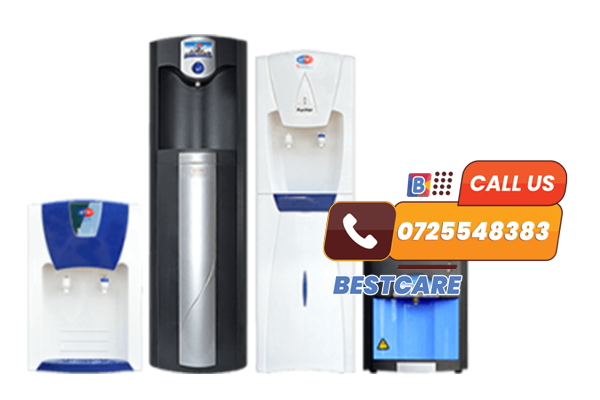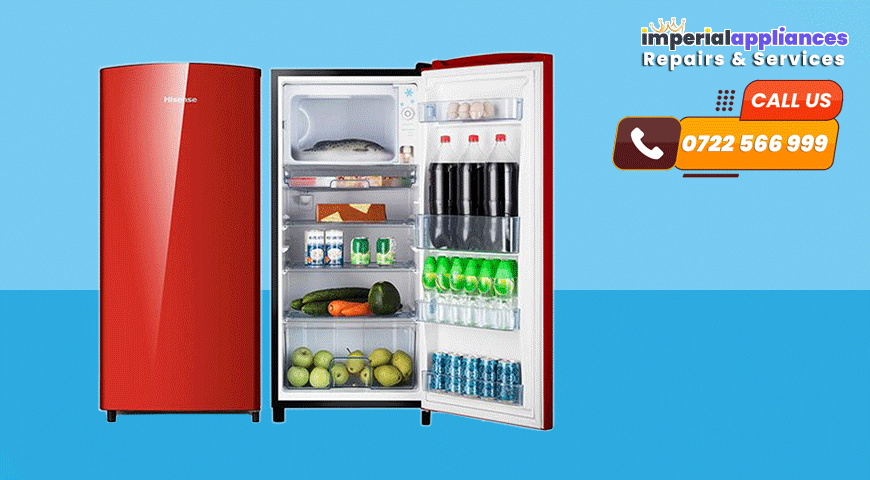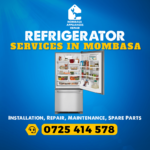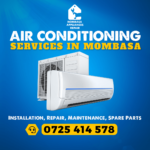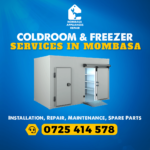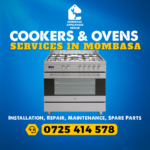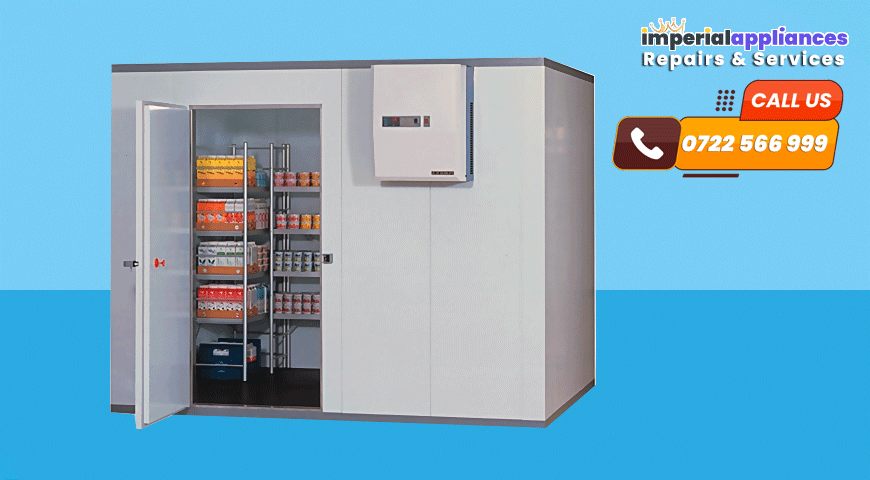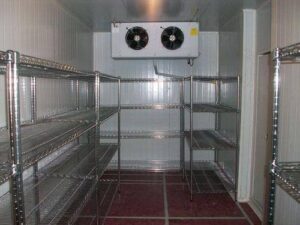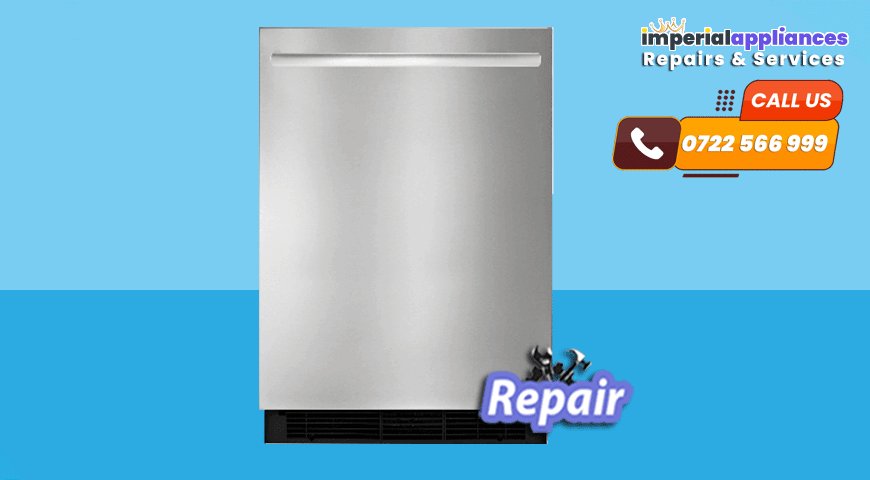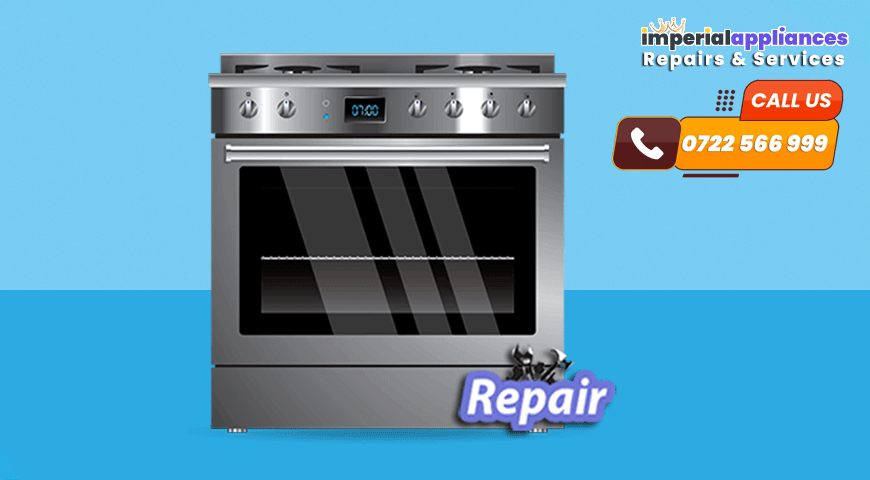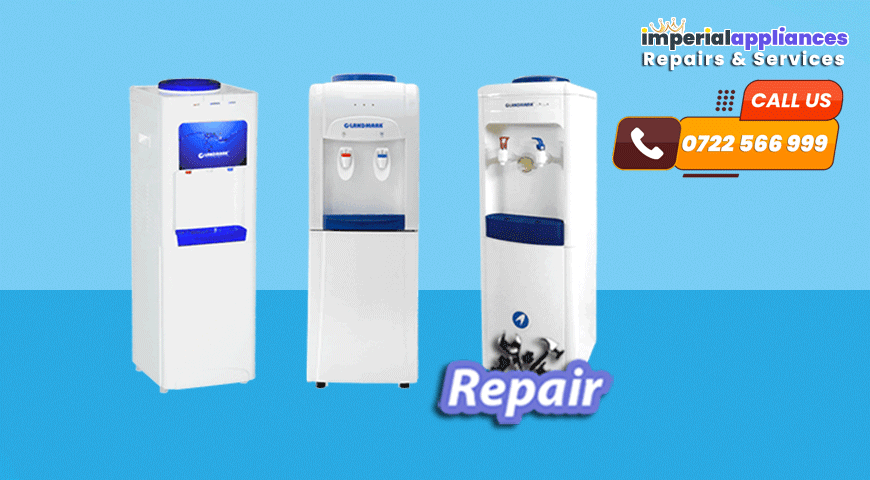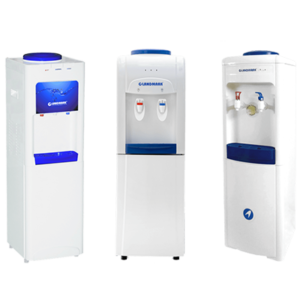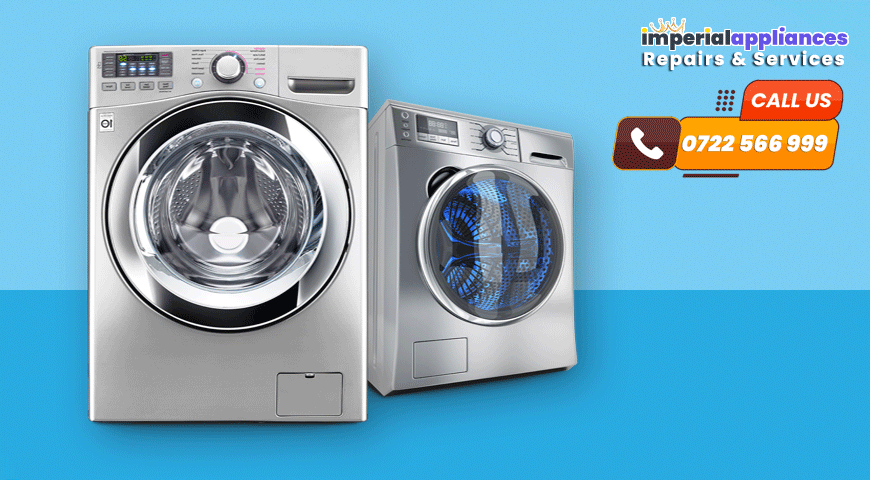Water Dispenser Repair in Westlands: Ensuring Hydration without Hassles
Water Dispenser Repair in Westlands : Water dispensers have become an essential part of modern households and offices, providing a convenient source of clean and cold water. However, like any other appliance, water dispensers can encounter problems over time. From leaky faucets to malfunctioning cooling systems, these issues can disrupt the daily routine and affect your access to fresh, clean water. This is where water dispenser repair services come to the rescue, ensuring that you can enjoy uninterrupted hydration without hassles.
The Importance of Water Dispenser Repair Services
- Expertise: Repairing a water dispenser requires specialized knowledge and skills. Trained technicians understand the inner workings of these appliances, making them capable of diagnosing and fixing a wide range of issues efficiently.
- Cost-Effective: Opting for repair services is often more cost-effective than replacing a malfunctioning water dispenser with a new one. Repairing parts or addressing minor issues can save you a significant amount of money in the long run.
- Environmentally Friendly: Repairing appliances rather than disposing of them helps reduce electronic waste, contributing to a greener, more sustainable environment.
- Convenience: Dealing with a faulty water dispenser can be inconvenient. A reliable repair service provider can quickly resolve the problem, minimizing disruptions to your daily routine.
Common Water Dispenser Issues
Water dispenser repair services are equipped to address a variety of problems, including:
- Leakages: Leaky faucets or water containers can cause water wastage and damage to your surroundings.
- No Cooling: When the water dispenser fails to cool the water, it can be frustrating, especially during hot weather.
- No Heating: Cold water dispensers with a heating option can malfunction, leaving you without access to hot water.
- Strange Noises: Unusual sounds coming from the dispenser can be indicative of underlying issues.
- Clogged Filters: Filters can become clogged with impurities over time, affecting the quality of the water.
The Repair Process
When you contact a water dispenser repair service, here’s what you can expect:
- Diagnosis: The technician will inspect your water dispenser to identify the root cause of the problem. This may involve checking for leaks, examining the electrical components, and testing the cooling or heating systems.
- Repairs: Once the issue is identified, the technician will proceed with the necessary repairs. This could involve replacing faulty components, cleaning clogged filters, or fixing wiring problems.
- Testing: After the repairs are completed, your water dispenser will be thoroughly tested to ensure that it is functioning correctly.
- Maintenance: Some repair services also offer routine maintenance to prevent future issues and extend the lifespan of your water dispenser.
Water dispenser repair services play a vital role in ensuring that you have access to clean, cold, and hot water when you need it most. By addressing common issues, these services save you money, reduce waste, and provide convenience. When your water dispenser encounters problems, don’t hesitate to reach out to a reliable repair service provider to keep the hydration flowing smoothly in your home or office.
Water Dispenser repair for all Types of Water Dispensers
Title: Exploring the Different Types of Water Dispensers
Water dispensers have become a common fixture in homes, offices, and public spaces, providing convenient access to clean and refreshing drinking water. There are several types of water dispensers available to suit various needs and preferences. In this article, we’ll explore the most common types of water dispensers.
**1. Bottled Water Dispensers:
- Top-Loading: These dispensers have a water bottle placed on top, which feeds water into the unit. They are easy to use and come in both hot and cold water options.
- Bottom-Loading: In these dispensers, the water bottle is hidden in the base of the unit. They offer a sleeker appearance and eliminate the need for heavy lifting when changing bottles.
- Countertop: Compact and space-saving, countertop bottled water dispensers are suitable for small kitchens or offices. They typically accommodate 3- to 5-gallon water bottles.
**2. Point-of-Use (POU) Water Dispensers:
- Plumbed-In (Direct Connection): These dispensers are connected directly to the water supply, eliminating the need for water bottles. They provide a continuous supply of filtered and purified water and are cost-effective in the long run.
- Under-Sink: Installed beneath the kitchen sink, under-sink POU dispensers connect to the water line and dispense filtered water through a separate faucet. They are out of sight and provide a clean, clutter-free look.
**3. Wall-Mounted Water Dispensers:
- **Wall-mounted water dispensers are commonly found in public places like schools, offices, and gyms. They dispense cold water and are often used in conjunction with a water filtration system.
**4. Refrigerator Water Dispensers:
- Built-In: Many modern refrigerators come equipped with built-in water dispensers that offer cold water, ice, and sometimes even hot water. These dispensers are convenient and save space.
- External: Some refrigerators have external water and ice dispensers on the front of the door. These provide easy access to chilled water and ice without opening the fridge.
**5. Tabletop Water Dispensers:
- **Tabletop water dispensers are small, portable units that can be placed on a countertop or table. They are perfect for small gatherings or events and typically dispense both hot and cold water.
**6. Hot Water Dispensers:
- **Hot water dispensers are designed specifically for dispensing hot water. They are commonly used in kitchens for quickly heating water for tea, coffee, or instant meals.
**7. Sparkling Water Dispensers:
- **For those who enjoy carbonated beverages, sparkling water dispensers carbonate still water on demand. They are popular for making homemade sodas and carbonated drinks.
The availability of various types of water dispensers allows consumers to choose the one that best fits their specific needs, whether it’s for home, office, or public use. Factors such as space, convenience, and the desire for bottled or bottleless solutions play a role in determining which type of water dispenser is the most suitable. Ultimately, these appliances make it easier than ever to stay hydrated with fresh and clean water.
Water Dispenser repair in Westlands for all common water dispenser brands
Common water dispenser brands offer a convenient solution for both homes and offices to access clean, filtered water easily. These brands have established themselves as reliable providers of hydration solutions, offering a range of features and styles to cater to diverse consumer needs. Here are some well-known water dispenser brands:
- Primo Water: Primo Water is a popular choice for water dispensers, known for its affordability and variety. They offer a range of products, including top-loading and bottom-loading dispensers, as well as countertop models. Primo’s dispensers often feature innovative designs and are compatible with their exchangeable water bottles.
- Avalon: Avalon is another trusted brand in the water dispenser industry. They are known for their sleek and modern designs, often featuring a combination of hot and cold water dispensers. Avalon’s products focus on energy efficiency and use eco-friendly materials.
- Whirlpool: Whirlpool is a household name known for its kitchen appliances, and they also offer a line of water dispensers. Whirlpool dispensers typically come with advanced water filtration systems, ensuring the water is clean and safe to drink. They offer both top-loading and bottom-loading options.
- Honeywell: Honeywell, a renowned brand in the home appliance industry, manufactures water dispensers that prioritize user convenience and water purity. They offer a variety of models, including freestanding and tabletop options, with features like adjustable temperature settings.
- Vitapur: Vitapur specializes in water dispensers with advanced filtration technology. Their products are designed to remove impurities and contaminants from tap water, providing consumers with a clean and refreshing drinking experience. Vitapur offers a variety of dispenser styles, including top-loading and bottom-loading models.
- Hamilton Beach: Known for their kitchen appliances, Hamilton Beach offers a selection of water dispensers that are user-friendly and stylish. Their products often include features like hot, cold, and room temperature water dispensing options.
- Brio: Brio is a brand recognized for its modern and sleek water dispensers. They offer a range of options, including bottom-loading dispensers and countertop models. Brio’s dispensers often feature child safety locks and energy-saving modes.
- Primo Stainless Steel: Primo Stainless Steel is a sub-brand of Primo Water, known for its durable and stylish stainless steel water dispensers. These dispensers offer a sleek and modern appearance while providing the convenience of cold and hot water on demand.
- Elkay: Elkay is a reputable brand known for its commercial-grade water dispensers and water coolers. They focus on durability and reliability, making their products suitable for heavy usage in offices, schools, and public spaces.
- Nestlé Pure Life: Nestlé Pure Life offers a range of water dispensers that complement their bottled water products. Their dispensers are often designed with simplicity and efficiency in mind.
When choosing a water dispenser brand, it’s important to consider factors such as your specific needs, budget, available space, and desired features. Whether you prioritize water filtration, energy efficiency, or design aesthetics, these common water dispenser brands offer a variety of options to cater to different preferences and requirements.
Common Water Dispenser Problems
Common Water Dispenser Problems and Solutions
Water dispensers are convenient appliances that provide chilled, filtered, or hot water at the touch of a button. However, like all machines, they can develop problems over time. Here are some common water dispenser problems and solutions to help you troubleshoot and resolve them.
- Water Leaks:
- Causes: Leaks can occur due to loose or damaged water lines, a malfunctioning water valve, or a cracked reservoir.
- Solutions: First, turn off the water dispenser and unplug it. Inspect the water lines for any visible damage or loose connections. If you find any, tighten the connections or replace the damaged parts. If the issue persists, it may be a faulty water valve or reservoir, which might require professional repair or replacement.
- No Water Flow:
- Causes: A lack of water flow can be caused by a clogged water filter, a frozen water line, or a malfunctioning water pump.
- Solutions: Start by checking if the water filter needs replacing. If it’s been a while since you changed it, a clogged filter can impede water flow. If the filter is not the issue, inspect the water line for any ice blockages, especially in the freezer compartment. If neither of these solutions works, it might be a malfunctioning water pump that needs professional attention.
- Water Tastes Bad or Has an Odor:
- Causes: Water with a strange taste or odor can result from a dirty or expired water filter, contaminated water source, or a dirty reservoir.
- Solutions: Replace the water filter if it’s past its recommended lifespan or if you notice a change in water quality. If the issue persists, it could be related to the quality of your tap water, in which case using a water purifier might be necessary. To address a dirty reservoir, clean it thoroughly following the manufacturer’s instructions.
- Water Dispenses at the Wrong Temperature:
- Causes: If the water dispenser is not delivering water at the desired temperature, it could be due to a faulty thermostat or a malfunctioning heating or cooling element.
- Solutions: Consult your appliance’s user manual to understand how to adjust the temperature settings. If the settings seem correct but the water temperature is still not right, it may be a thermostat issue or a problem with the heating/cooling elements. In such cases, you should contact a professional technician for repair.
- Strange Noises:
- Causes: Unusual noises such as gurgling, humming, or clicking can be caused by a variety of factors, including trapped air in the lines, a malfunctioning pump, or loose components.
- Solutions: If the noise is coming from trapped air, try flushing the water lines by dispensing water for a few minutes. If the noise persists, it may be a mechanical issue, and you should seek professional assistance. Loose components can also be tightened to eliminate rattling or clicking noises.
- Dispenser Button or Lever Problems:
- Causes: Over time, the dispenser buttons or levers can become sticky or unresponsive due to dirt and residue buildup.
- Solutions: Clean the buttons or levers with a mild detergent or a mixture of water and vinegar to remove any dirt or residue. If they are still unresponsive, you may need to replace them, which is generally a straightforward process.
Regular maintenance and timely addressing of these common water dispenser problems can help ensure the longevity and functionality of your appliance. When in doubt or if problems persist, it’s always a good idea to consult the manufacturer’s manual or contact a professional technician for assistance.
Water Dispenser Parts and Spares, Nsairobi Kenya
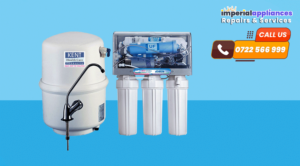
Water dispensers, whether they are standalone units or integrated into refrigerators, have several essential parts and functions that work together to provide convenient access to clean and refreshing water. Understanding these components can help you troubleshoot issues and maintain your water dispenser effectively. Here are the key parts and their functions:
- Water Reservoir:
- Function: The water reservoir is a storage tank that holds the water to be dispensed. It comes in various sizes, depending on the model, and can be made of plastic or stainless steel. The reservoir ensures a continuous supply of water, even when the water source is temporarily unavailable.
- Water Source Connection:
- Function: This is the point where the water dispenser is connected to the water supply. It typically consists of a water line or hose that carries tap water to the dispenser. A shut-off valve is often included to control the flow of water.
- Water Filter:
- Function: Water filters are essential for improving water quality by removing impurities, sediment, chlorine, and other contaminants. They ensure that the water dispensed is clean, safe to drink, and has a better taste. Filters need periodic replacement to maintain their effectiveness.
- Cooling System (Refrigeration Unit):
- Function: If your water dispenser offers chilled water, it contains a cooling system. This system cools the water in the reservoir to the desired temperature, typically between 35°F and 50°F (1.7°C and 10°C). It consists of a compressor, condenser, evaporator, and a fan to circulate cold air.
- Heating Element (Hot Water Dispensers):
- Function: Hot water dispensers have a heating element that heats the water in the reservoir to provide hot water on demand. The temperature can be adjusted to suit your preferences, typically ranging from 160°F to 200°F (71°C to 93°C).
- Dispensing Mechanism (Faucet or Spout):
- Function: The dispensing mechanism is where you access the water. It can be a simple push-button, lever, or touchpad that activates the flow of water when pressed. Some dispensers also feature child safety locks to prevent accidental hot water dispensing.
- Drip Tray:
- Function: The drip tray collects any spilled or excess water, preventing it from reaching the floor or countertop. It is removable for easy cleaning and maintenance.
- Temperature Controls:
- Function: Temperature controls allow you to adjust the temperature of the water being dispensed, whether it’s cold or hot. These controls are typically located on the front panel or inside the dispenser.
- Indicator Lights and Displays:
- Function: Many modern water dispensers come equipped with indicator lights or digital displays that provide information about the water temperature, filter status, and other important functions. These help you monitor and maintain your dispenser more effectively.
- Safety Features:
- Function: Water dispensers often include safety features like child locks, which prevent hot water from being dispensed accidentally, and leak detection systems to alert you if there is a water leak or malfunction.
- Overflow Prevention System:
- Function: To prevent overflows and water wastage, some water dispensers are equipped with sensors that detect when the reservoir is full and automatically stop water flow.
Understanding these water dispenser parts and their functions can help you identify issues when they arise and perform basic maintenance tasks. Regular cleaning, filter replacement, and occasional servicing by a professional technician can keep your water dispenser working efficiently and providing clean, refreshing water for your needs.
Water Dispenser maintenance services in Westlands
Water dispenser maintenance is essential to ensure that your appliance functions efficiently, delivers clean and refreshing water, and lasts for a long time. Regular maintenance tasks can help prevent common problems and keep your water dispenser in excellent condition. Here’s a comprehensive guide on water dispenser maintenance:
- Cleaning:
- Exterior: Wipe down the exterior of your water dispenser with a damp cloth to remove dust, fingerprints, and spills. Use a mild detergent or a mixture of water and vinegar for stubborn stains. Make sure to dry it thoroughly to prevent water spots.
- Drip Tray: Remove and clean the drip tray regularly. Wash it with warm, soapy water, and rinse it thoroughly. Empty and clean any accumulated water in the drip tray holder.
- Water Reservoir: If your water dispenser has a removable water reservoir, clean it periodically with warm, soapy water, and rinse it thoroughly. Ensure it is completely dry before reinserting it.
- Faucet or Spout: Clean the dispensing mechanism (faucet or spout) by running a mixture of water and vinegar through it. This helps remove mineral deposits and any potential blockages. Rinse thoroughly afterward.
- Filter Replacement:
- If your water dispenser has a water filter, replace it according to the manufacturer’s recommendations. Typically, this is every six months to a year, but it can vary depending on water quality and usage. A clogged or expired filter can lead to poor water quality.
- Check for Leaks:
- Regularly inspect the water dispenser and the surrounding area for any signs of leaks. Leaking water can cause damage to your appliance and the surrounding area. If you detect a leak, address it promptly by tightening connections or seeking professional assistance if necessary.
- Sanitizing:
- To prevent the growth of bacteria and mold, sanitize the water reservoir, drip tray, and internal components periodically. You can use a mixture of water and a mild disinfectant or follow the manufacturer’s recommended sanitization procedure.
- Temperature Calibration:
- Check the temperature settings for hot and cold water and adjust them if needed. Follow the manufacturer’s instructions for calibrating the temperature controls to ensure your water dispenser provides water at the desired temperatures.
- Inspection and Maintenance Schedule:
- Create a regular maintenance schedule to keep track of when cleaning, filter replacement, and other tasks are due. This helps ensure that you don’t forget crucial maintenance steps.
- Professional Servicing:
- If you encounter complex issues or problems that you can’t resolve on your own, such as electrical or mechanical malfunctions, it’s advisable to contact a professional technician. They can diagnose and repair the problem to prevent further damage.
- Water Source Maintenance:
- If your water dispenser is connected to a water line, make sure to maintain the water source as well. Periodically check for any issues with the water supply line and the shut-off valve.
By following these maintenance guidelines, you can keep your water dispenser in optimal working condition, ensure the quality of the water it dispenses, and extend its lifespan. Regular care and attention to your water dispenser will contribute to its reliable performance and your satisfaction with the appliance.
Coldrooms Installation & Repairs
Appliance Repair Services in Nairobi and Mombasa, Kenya

